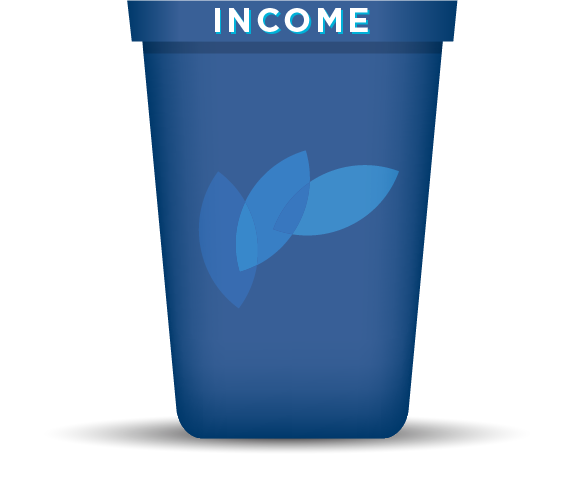By Samantha Compton
Last month, we talked about a unique Three-Bucket Approach that I use to teach my clients to assess their investments and savings. This approach makes it much easier to determine whether funds should be set aside for emergencies, income, or future needs. The Buckets will then dictate what financial products should be used within them to accomplish these purposes.



This month, I want to introduce the next Principle of Financial Planning and focus on the Growth Bucket. It is an essential component for addressing this fourth principle.
Principle #4: Don’t let your portfolio take a H.I.T. (health care, inflation, taxes)
Some of the greatest unknowns in retirement are:
1) How long will I live, and will I outlive my savings?
2) How much more expensive will things get over time?
3) How will taxes affect my savings?
4) Will I need some form of long-term care?
Assets in the Growth Bucket should be assets that are not being used to generate income. When we have one-off expenses above our income, the Growth Bucket will be where we go to fund those things. When things get more expensive over time due to inflation, the Growth Bucket will address that as well. There may come a time when an additional portion of funds needs to be moved from the Growth Bucket to the Income Bucket and be invested to produce additional income. The Growth Bucket is also important for paying any unexpected taxes and health care costs as we get older.
The Growth Bucket aims to determine the rate of return required to meet your long-term goals and cover potential risks. We then choose market investments that will best achieve that return. When selecting these market investments, here are some important considerations:
An appropriate asset allocation to reach the desired rate of return
Diversification within that asset allocation
Taking the least amount of risk for the desired results
Only invest funds for growth that are not needed for the next five years or longer
Often, when people prepare for retirement, they see only the lump sum total of what they have saved for retirement. They take that total and try to determine how much income it will produce. This way of approaching retirement creates a situation where every dollar is tied up producing income.
With that in mind, how will the risks I have described above be addressed if all of the retirement funds are responsible for producing income? What if you have to spend a portion of those funds on something else? What potentially happens to the income? It could go down!
This brings us to a question: Is it possible to invest those funds for both income AND growth simultaneously?
Historical investing tells us the answer to that question is “No.”
Traditionally, investments that have lower volatility and more stability (and that are often used to help produce income) also have lower rates of return. If those rates of return fall too low, they will be unable to stay ahead of inflation. Additionally, if some of that same pool of funds is invested for growth, you risk having to sell the investments during down markets to have the needed income. This can have devastating long-term effects on a portfolio–either the income needed isn’t there, or the growth needed isn’t there.
Separating growth assets from those needed for producing income is essential for a suitable long-term plan. In the coming months, I will discuss how to determine how much of your savings needs to be set aside for income so that you can determine what portion is available for growth. It’s important to have income AND additional spending money!
Action Step:
Take a look at your retirement savings accounts. If you are more than five years from retirement, are you properly allocated for the growth you need, and are you well diversified within that allocation? Is your current long-term retirement plan at risk of taking a H.I.T.?
If you ARE within five years of retirement, how much risk are you taking with the funds intended for producing income when you retire?
Now is the time to begin addressing these questions with a Financial Advisor experienced in Retirement and Income Planning.

Samantha Compton is an SWSM contributor and financial advisor. She is also a Senior Financial Advisor & Women’s Investment Specialist with an SEC Registered Investment Advisor Firm in the Kansas City, MO area. She places a high value on financial education and believes it is essential for creating and sticking to a well-written financial plan!
Disclaimers:
This article is written to provide general information on the subjects covered. It is not, however, intended to provide specific legal or tax advice and cannot be used to avoid tax penalties or to promote, market, or recommend any tax plan or arrangement. Please note that Wise Wealth, LLC and its representatives do not give legal or tax advice. Consult your tax advisor or attorney for advice specific to your circumstances.










